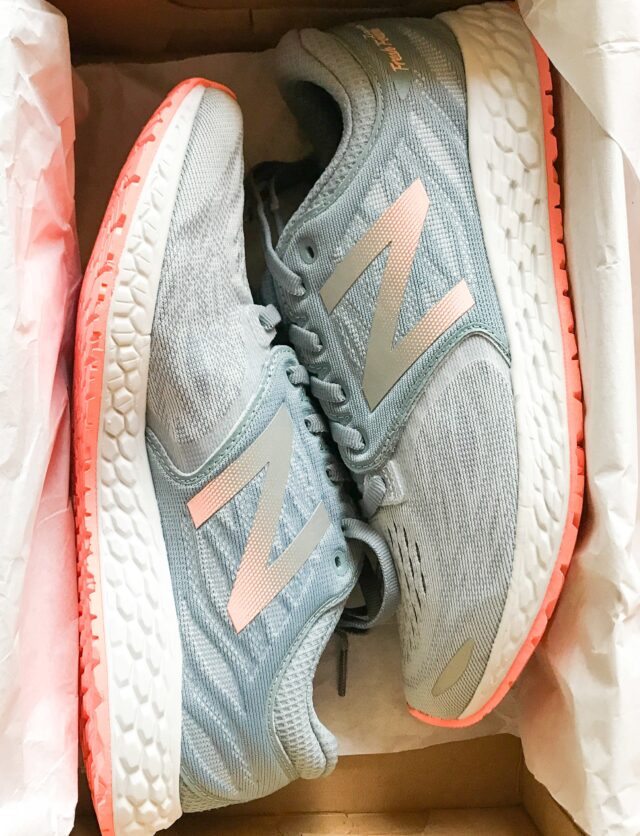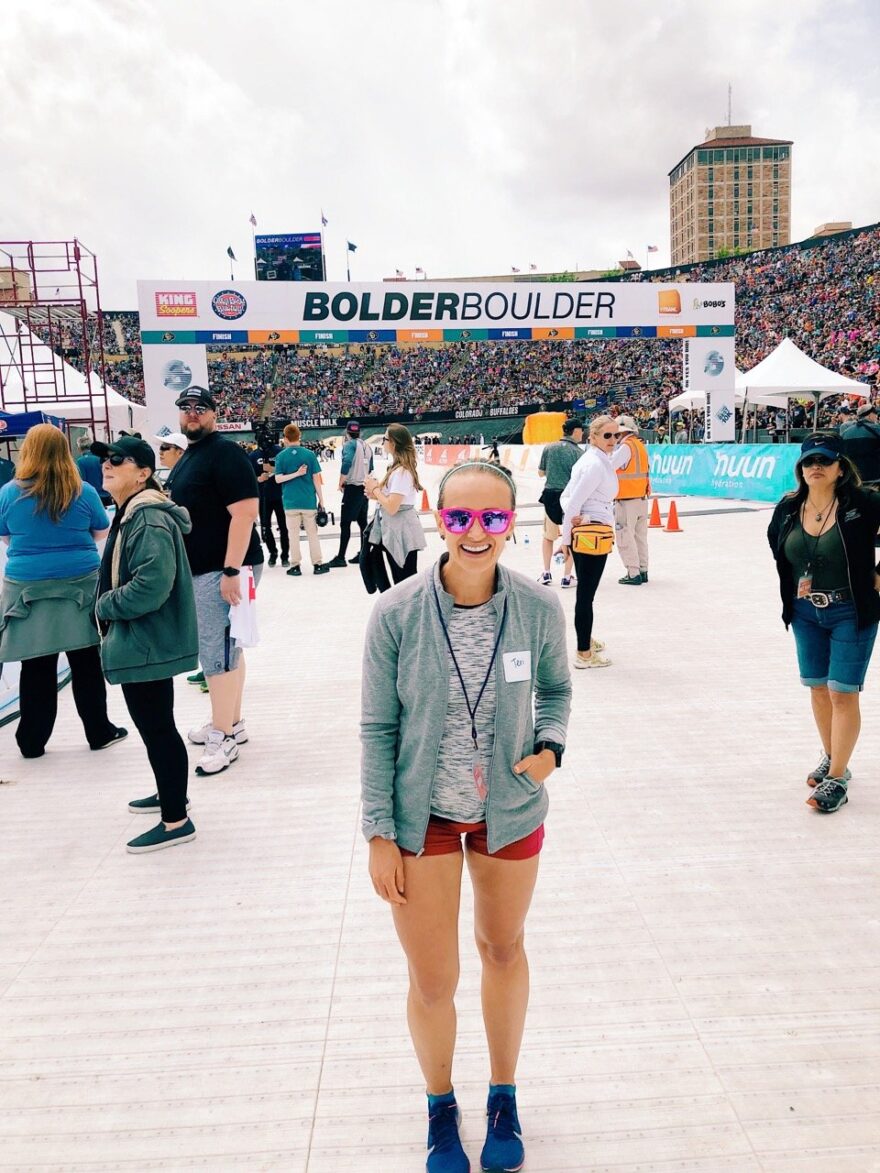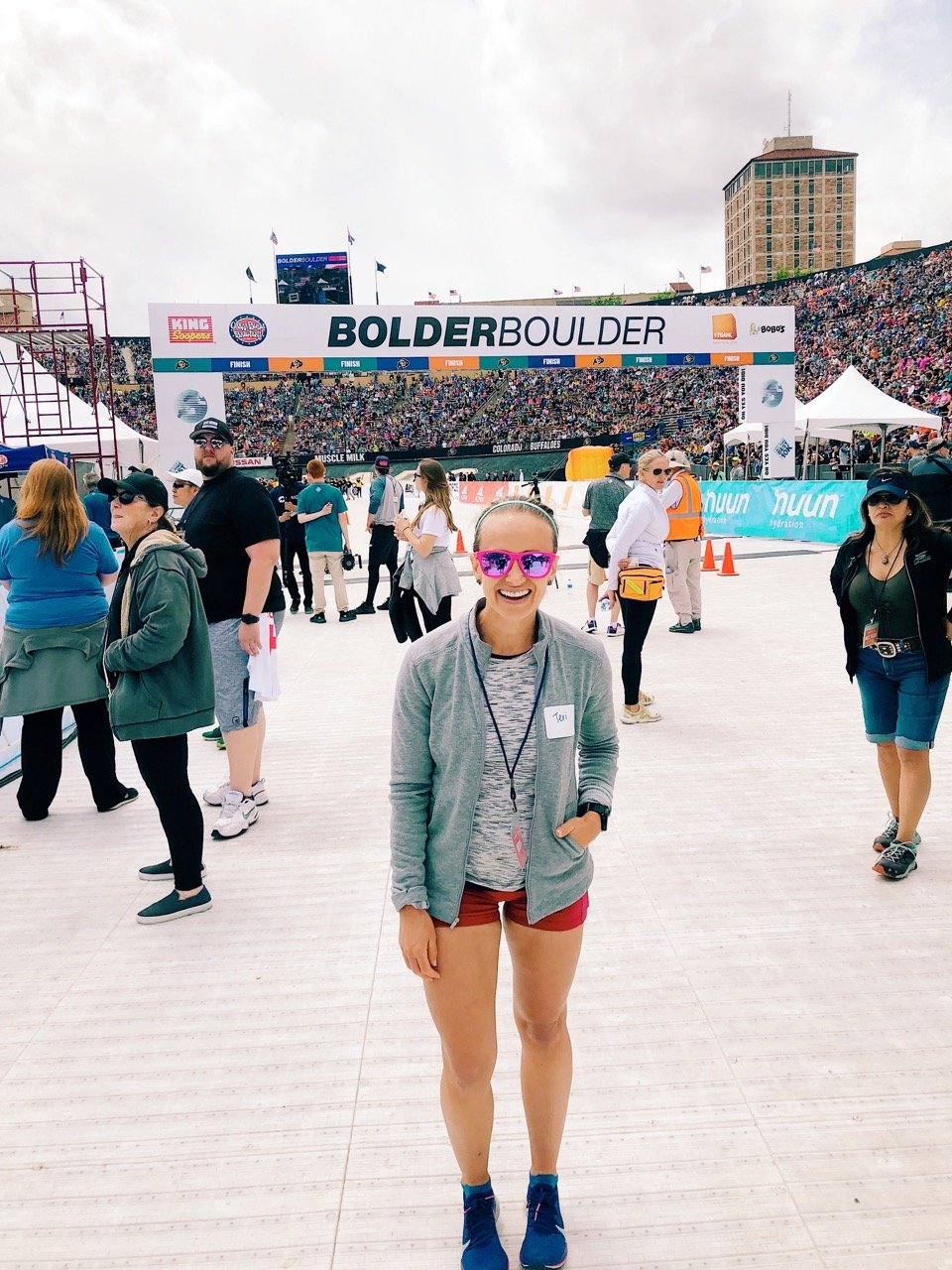


So you’re considering a 10K? I LOVE this distance. It’s a perfect in-between race for someone who has already run a 5K but isn’t ready to take on a half marathon quite yet. It’s also a great length for advanced or recreational runners who like to race frequently. And if you’re someone who usually runs half marathons or full marathons, the 10K is a great way to work on your speed.
Fun fact: It’s my mom’s favorite race distance! What she and I love both about a 10K is that it requires you to pace yourself and save some energy, but you can run it faster than a half marathon so it adds challenge. Plus, it allows you to have a little more time in your life since it’s not as much of a time commitment as longer distances. A 10K combines the heat that comes from the speed of a 5K and some of the endurance required for a half marathon. It short, it’s a great way to improve your running.
Today I’m going to share the best things I’ve learned about training for a 10K so you feel strong and ready for your race day!

First things first: A 10K is 6.2 miles. It’s a sneaky hard distance, to be honest. It combines the lung burning that you may be familiar with in a 5K (if you’re trying to run it fast, anyway) plus some of the endurance required for a half marathon (tired legs!). Combining the challenge of those two things is a great way to improve your running since training for a 10K works both fast-twitch and slow-twitch muscles.
You may wonder “What is a good 10k time?” and the answer is that it all depends. If you’re running 9 minute miles, it will take a little under an hour. To set a time goal for yourself, take your average pace on a 4 mile run, add a tiny bit of time to be safe, and then multiply it by 6.
If you race at elevation (like at the Bolder Boulder 10K), remember that will impact how you feel if you don’t like at elevation. Conversely, if you train at altitude and run at sea level, you’ll feel stronger on race day. Same goes for the weather – the heat and the cold can dramatically impact your race day. Don’t expect perfect conditions, but you can prepare for a lot of things in training.

To prepare for a strong 10K, you first need build a good base of mileage. A running base is foundational level of mileage to prepare you for the intensity of a training plan, which will progressively increase in mileage and intensity. Basically, you’re getting your body ready for the harder stuff, to help prevent injury and burnout and to allow you to push harder.
If you’re a beginner, a good goal is to get up to 10-12 miles in a week. For intermediate or advanced runners, you can train with more weekly mileage, perhaps 20-30 miles a week. While these numbers might seem high, they aren’t too intimidating when you look at the day-by-day breakdown. For a runner aiming for 13 miles in a week, that means three runs in a week, one at 4 miles, another at 4.5, and the last at 5 miles.
And remember, you won’t start with those distances. If you’re a true beginner, you’ll start with run-walking and your first few weeks of training will be with runs much shorter than that. The key here is to make sure you gradually increase your mileage. You can find training plans online, and I have two 10K plans in my online running course, one for beginners and one for intermediate runners.
If you’re planning to run your race just to finish happy and strong and you don’t care about your time, then don’t worry about running faster or adding in speed work. Focus on enjoying training and staying injury free. However, if you want to run a certain time, you’ll want to add in some speed work.
To increase your speed without injury, keep speedwork to just one day a week. One of my favorite workouts for the 10K is a tempo run. A tempo run is slightly faster than your regular pace, to the point where you can’t make easy conversation. You base-building pace should be a conversation pace, where you’d be able to talk in full sentences. But for a tempo run, you should struggle to complete a full sentence but you shouldn’t be completely breathless and unable to talk. This will get you ready to run a quick 10k race pace.
The 10K distance is long enough that you should train for it. For some runners, a weekend 5k can be a last minute decision. I don’t recommend that for a 10K, unless you already have a base of 15+ miles a week or you’re a full marathoner. The longest run that a beginner will likely do is 5-6 miles, and for an experienced runner, it will be closer to 8 (or more, if you’re advanced).
You don’t need to be able to run the full distance before race day, but you should get close to it. On the day of the race, your body will feel rested from tapering (reducing distance in the weeks leading up to race day) and you’ll have adrenaline to get you to the finish line feeling strong. Adding in long runs to your training plan is essential!
Running works lots of leg muscles, and to get stronger and faster (and avoid injury), you’ll need to add strength training to your plan. In addition to strength training, cross-training is a great way to work different muscles, increase your cardiovascular endurance and help prevent injuries. This post talks more about the benefits of cross-training and the best kind. My training plans note which days are good days to do cross training around your running.
Don’t go out too fast when the race starts! You have 6 (and a little more) miles to run, so you want to save some energy for the end. I recommend starting a little slower than you want to. The starting line can be so energizing that it makes you want to run fast, probably faster than you should at the start. Make a promise to yourself to stay back a little so that you can pass all of those people at the finish line ;). It feels SO good to have more left in the tank for the last mile.
The nutrition aspect of running is often overlook and makes a big difference in how you feel and perform in training and on race day. Here’s what to eat on race day and this post has some ideas for what to eat before a regular training run. Plan to wake up a little earlier than you really need to so that you can eat and digest with plenty of time to go before your run or race. If you think you may be deficient in certain nutrients or you’re really struggling with energy or injuries, I HIGHLY recommend InsideTracker. Use this link and code AFOODIESTAYSFIT at checkout for 20-% off an InsideTracker plan.
If you’re training for a 10K, I’d love to hear which one so leave a comment and share. And I hope you have a great race! If you want more guidance on improving your running and access to my private Facebook group to ask me questions about your training, become a Rookie Runner member here!
Shop my running gear


Leave a Comment